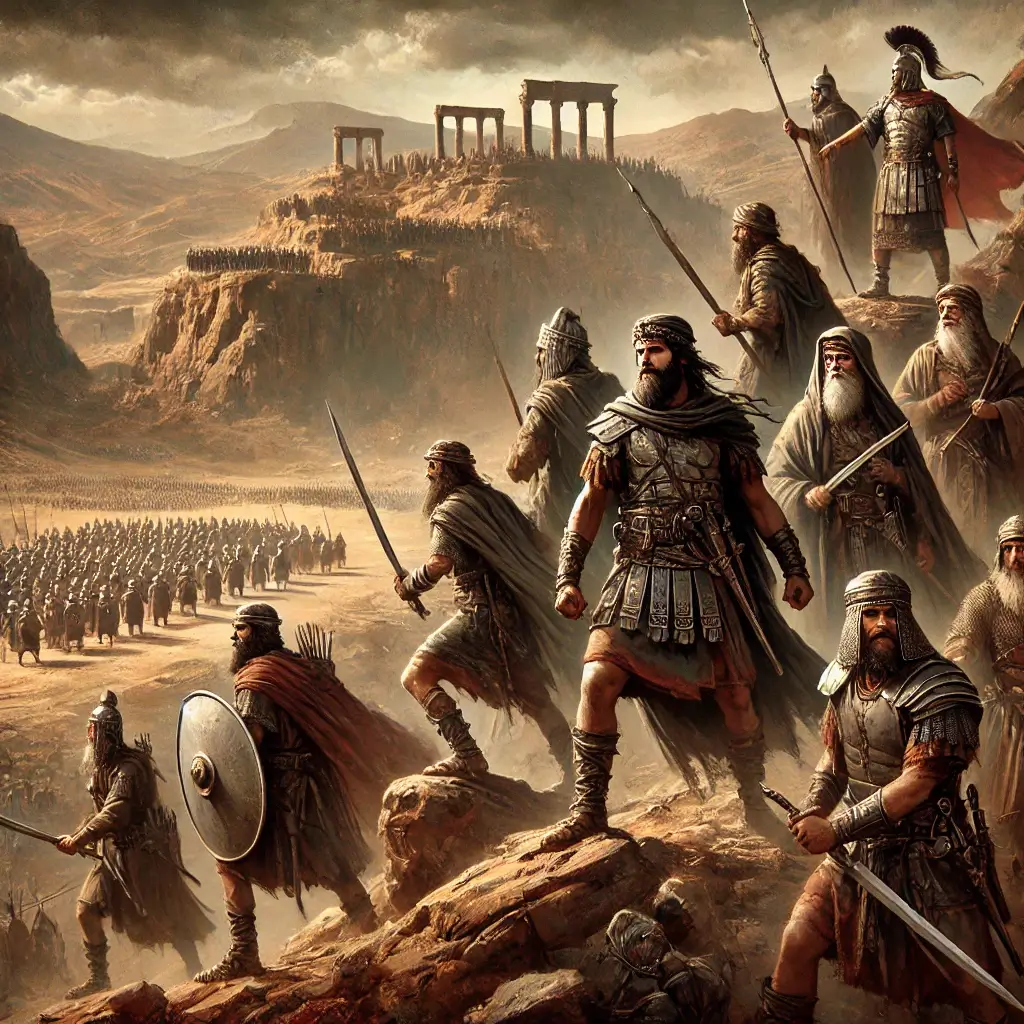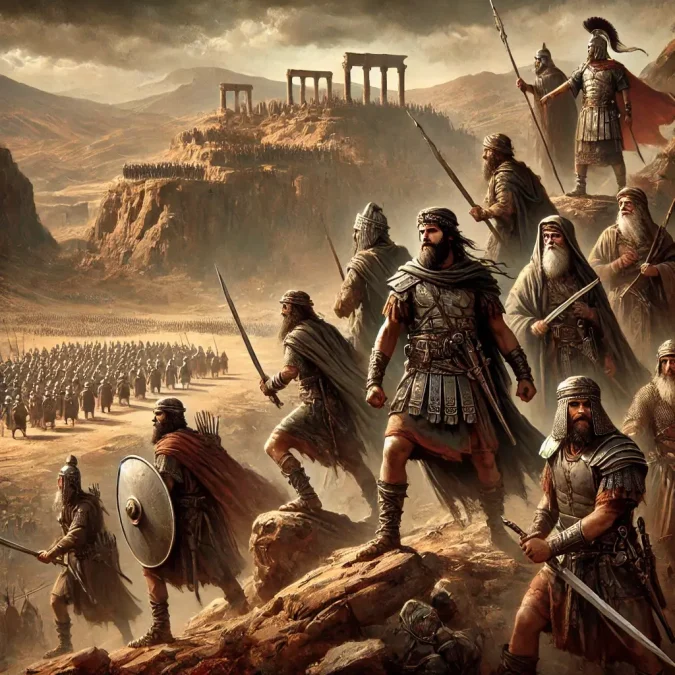
The Zealots were a Jewish political movement in the 1st century CE that played a crucial role in resisting Roman rule over Judea. Known for their fervent opposition to the Roman occupation, the Zealots became synonymous with rebellion, resilience, and religious zeal. Their actions culminated in the First Jewish-Roman War, also known as the Great Revolt, which led to significant events like the siege of Jerusalem and the eventual destruction of the Second Temple. This article explores the history, ideology, key events, and legacy of the Zealots, uncovering their impact on Jewish history and their role in shaping the concept of resistance against oppression.
Who Were the Zealots?
The Zealots were one of several Jewish sects active during the late Second Temple period. Unlike other groups, such as the Pharisees and Sadducees, the Zealots were characterized by their uncompromising stance against Roman authority and their willingness to use violence to achieve political and religious freedom.
Origins of the Zealots
The origins of the Zealot movement can be traced back to the increasing dissatisfaction among the Jewish population with Roman rule in Judea. The imposition of heavy taxes, Roman interference in religious matters, and the installation of unpopular rulers fueled resentment among the Jewish people. The Zealots emerged as a response to these grievances, advocating for armed resistance to achieve independence.
The Influence of Judas of Galilee
The Zealot ideology was heavily influenced by Judas of Galilee, who led a revolt against Roman taxation in 6 CE. Judas and his followers rejected the legitimacy of Roman rule, insisting that Jews should have no master other than God. This belief in divine sovereignty over political rulers became a central tenet of the Zealot movement, motivating their fierce resistance against Roman authority.
Ideology and Beliefs of the Zealots
The Zealots were driven by a deep commitment to Jewish nationalism and religious freedom. They believed that the only way to restore Judea’s independence was through direct action, including armed revolt. Their ideology was rooted in a combination of religious fervor and political determination, making them one of the most radical factions in Judea during the Roman period.
Divine Sovereignty and Political Freedom
At the core of the Zealot belief system was the idea of divine sovereignty. They believed that God was the only legitimate ruler of the Jewish people and that submission to Roman authority was a form of idolatry. This belief drove their insistence on political freedom, as they viewed Roman rule as an affront to their religious convictions and national identity.
Use of Violence and Guerrilla Warfare
The Zealots were not hesitant to use violence to achieve their goals. They engaged in guerrilla warfare tactics, targeting Roman officials, soldiers, and Jewish collaborators who they viewed as betraying their people. The Sicarii, a splinter group of the Zealots, were particularly notorious for their use of assassination to eliminate perceived enemies of Jewish independence.
The Role of the Zealots in the First Jewish-Roman War
The Zealots played a pivotal role in the First Jewish-Roman War (66-73 CE), a major uprising against Roman rule that ultimately led to the destruction of Jerusalem and the Second Temple. Their actions and influence were instrumental in sparking and sustaining the revolt, despite the overwhelming power of the Roman Empire.
The Outbreak of the Revolt
The First Jewish-Roman War began in 66 CE, following a series of escalating tensions between the Jewish population and Roman authorities. The immediate trigger was the Roman governor Gessius Florus‘s decision to seize funds from the Temple treasury, which led to widespread outrage. The Zealots, along with other factions, seized the opportunity to rise up against Roman rule, capturing the Fortress of Antonia and driving the Romans out of Jerusalem.
Internal Conflicts and the Siege of Jerusalem
The Zealots were not a unified group, and their internal divisions significantly impacted the course of the revolt. Jerusalem became a battleground not only between the Jews and Romans but also among various Jewish factions, including the Zealots, who sought to control the city. The Zealots, led by figures such as John of Gischala and Eleazar ben Simon, fought against other Jewish groups, leading to chaos and weakening the overall defense of the city.
The siege of Jerusalem by the Romans, led by Titus, was marked by immense suffering and destruction. The Zealots’ determination to resist at all costs, even when defeat seemed inevitable, contributed to the devastation of the city and the eventual destruction of the Second Temple in 70 CE. This event marked a turning point in Jewish history, leading to the diaspora and a significant shift in Jewish religious life.
The Fall of Masada and the End of the Zealot Rebellion
After the fall of Jerusalem, the remaining Zealots retreated to Masada, a fortress built by Herod the Great on a plateau overlooking the Dead Sea. Masada became the last stronghold of the Zealots, where they continued their resistance against the Romans.
The Siege of Masada
The siege of Masada began in 72 CE, when Roman forces, led by Lucius Flavius Silva, laid siege to the fortress. The Zealots, under the leadership of Eleazar ben Yair, held out for several months, despite being vastly outnumbered. The Romans built a massive ramp to breach the fortress walls, demonstrating their determination to crush the last remnants of the rebellion.
The Mass Suicide
When it became clear that the Romans would soon breach the defenses, the Zealots at Masada chose to take their own lives rather than be captured and enslaved. According to the historian Flavius Josephus, the defenders decided to commit mass suicide, with each man killing his family before being killed by another until only one remained to fall on his own sword. This act of defiance has become a symbol of Jewish resistance and the refusal to submit to oppression.
Legacy and Historical Impact of the Zealots
The Zealots left a lasting legacy in Jewish history, symbolizing the struggle for freedom and the determination to resist foreign rule. Their actions during the First Jewish-Roman War had profound consequences for the Jewish people, shaping the course of their history for centuries to come.
The Destruction of the Second Temple
The destruction of the Second Temple in 70 CE was one of the most significant outcomes of the Zealot-led revolt. The loss of the Temple marked the end of the Second Temple period and led to major changes in Jewish religious practice, as the central place of worship was no longer available. This event also contributed to the development of Rabbinic Judaism, which focused on the study of the Torah and the synagogue as the center of Jewish religious life.
The Symbol of Resistance
The Zealots have come to symbolize the spirit of resistance against tyranny and the fight for freedom. Their story has been invoked throughout history by various groups seeking to resist oppression, and the siege of Masada, in particular, has become a powerful symbol of courage and defiance. The phrase “Masada shall not fall again” has been used as a rallying cry for the modern state of Israel, emphasizing the importance of self-defense and national sovereignty.
Modern Interpretations and the Zealot Legacy
The Zealots have been interpreted in various ways by historians, religious scholars, and political leaders. Their actions and motivations have been the subject of debate, with some viewing them as heroic freedom fighters and others as fanatics whose actions brought destruction upon their people.
Historiographical Perspectives
Historians have offered different perspectives on the Zealots and their role in the First Jewish-Roman War. Flavius Josephus, a Jewish historian who defected to the Romans, portrayed the Zealots in a largely negative light, emphasizing their internal divisions and their role in the destruction of Jerusalem. However, modern historians have sought to provide a more nuanced view, acknowledging the complex motivations of the Zealots and the broader context of Roman oppression.
The Zealots in Popular Culture
The story of the Zealots has been depicted in various forms of popular culture, including films, novels, and documentaries. Their struggle against the Romans has been portrayed as a dramatic and tragic story of resistance, highlighting the human cost of war and the desire for freedom. The Zealots’ actions have also been compared to modern resistance movements, drawing parallels between their fight against Roman imperialism and contemporary struggles for independence and justice.
Conclusion: The Enduring Spirit of the Zealots
The Zealots were a group defined by their unwavering commitment to freedom and their refusal to submit to foreign rule. Their actions during the First Jewish-Roman War left an indelible mark on Jewish history, leading to both the tragic destruction of Jerusalem and the enduring symbol of resistance embodied by Masada. The legacy of the Zealots continues to inspire and provoke debate, reminding us of the complexities of resistance, the cost of freedom, and the human spirit’s capacity for resilience.
The story of the Zealots serves as a testament to the power of conviction and the desire for self-determination, even in the face of overwhelming odds. Whether viewed as heroes or fanatics, the Zealots represent a significant chapter in the history of Jewish resistance, one that continues to resonate in the modern world.

Excellent article. I have a pet peave – anonymous web sites. You need to state in your about who you are, who are the writers, your mission. Internet search with AI says you are part of history.com. Another search shows who the writers are at history.com. If that is the case, say so, it lends credibility (or not) to what you are doing or trying to do.